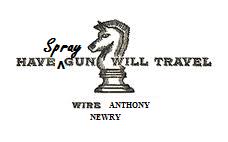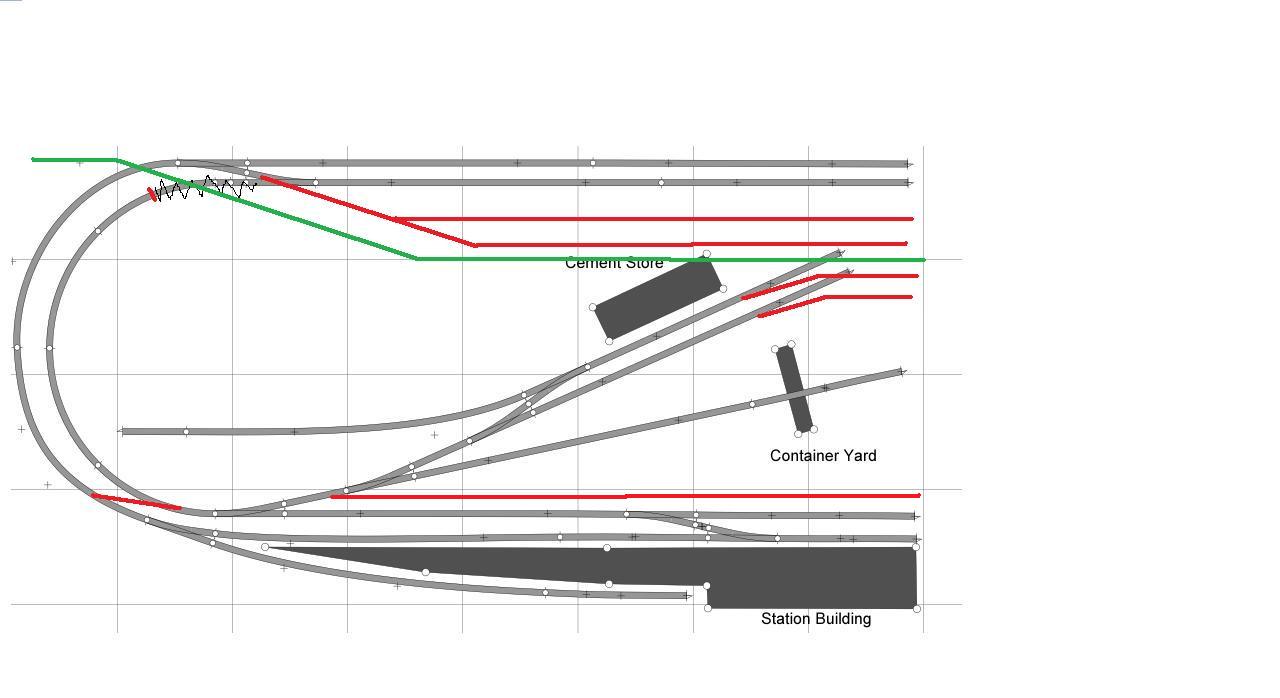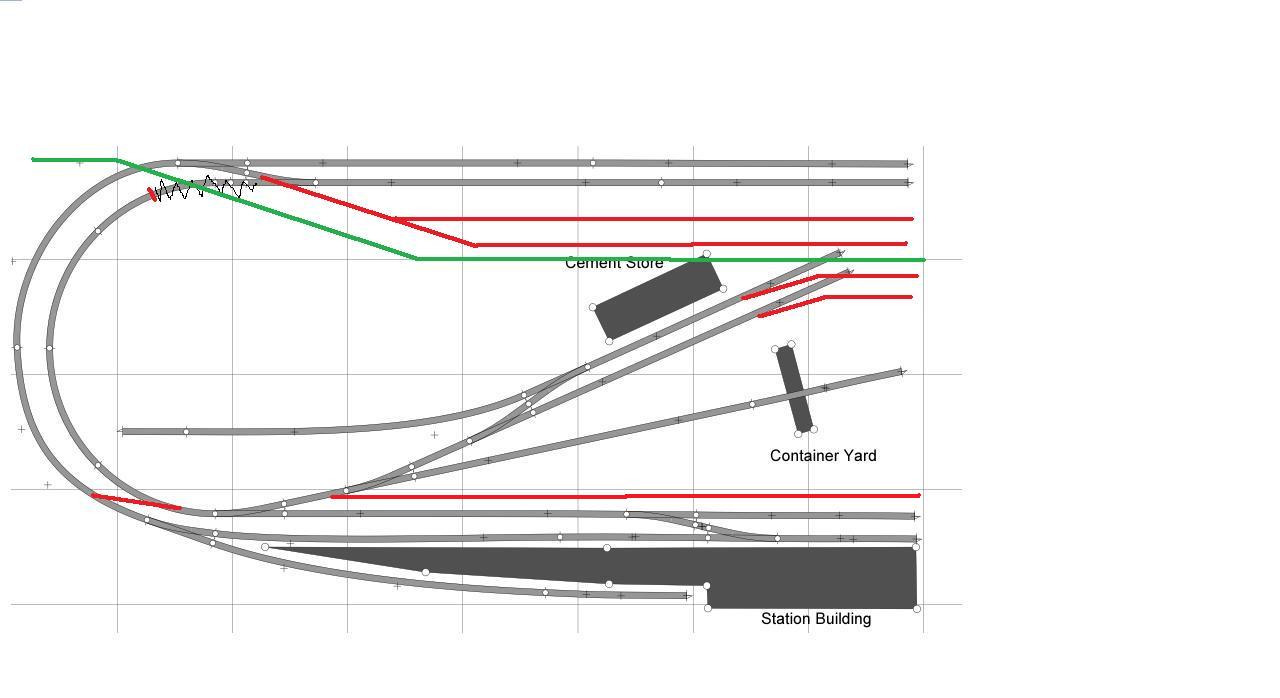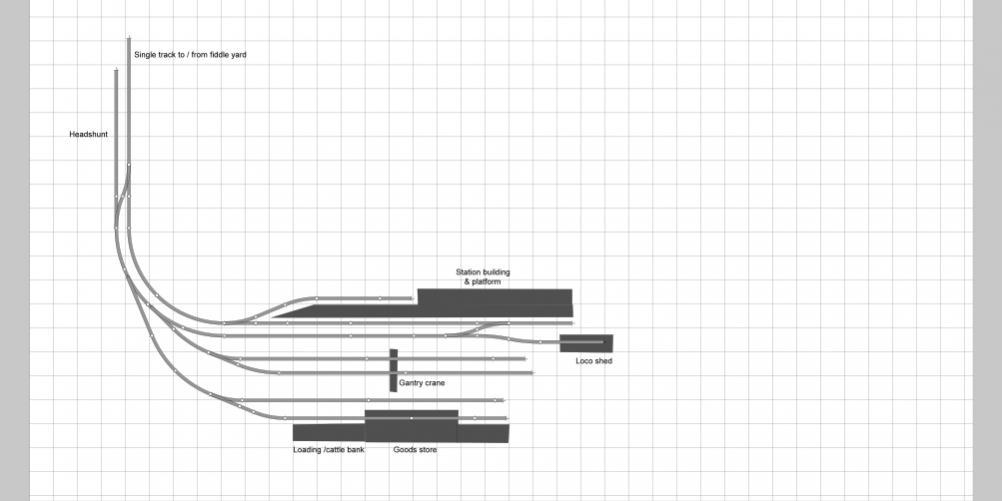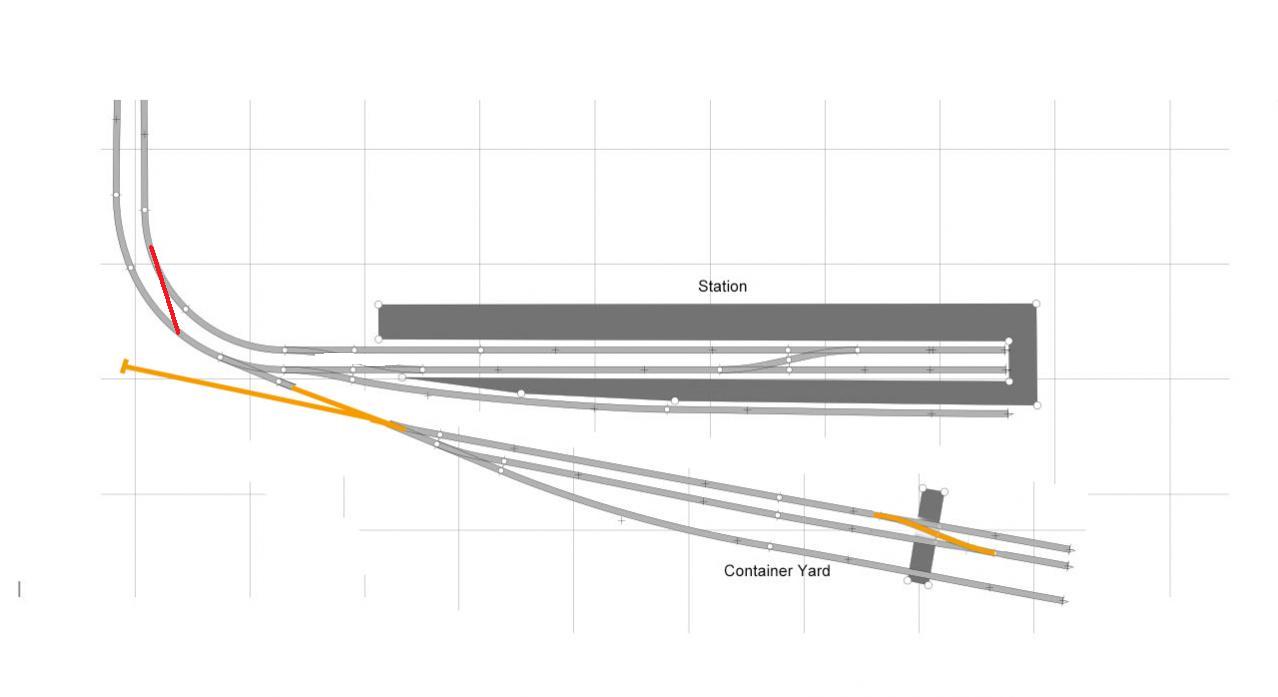-
Posts
1,037 -
Joined
-
Last visited
-
Days Won
5
Content Type
Profiles
Forums
Events
Gallery
Blogs
Store
Community Map
Everything posted by josefstadt
-
Connolly shed closed on 31 December 2010. The area in front of the shed is only used to stable locomotives, all servicing work is undertaken in Inchicore Works now. The version of the redevelopment story I heard was that the shed was to be completely refurbished to accommodate a relocated and upgraded CTC centre. The original CTC building is now considered too small given the massive expansion of the system and it was that building that would have been demolished as part of the proposed redevelopment plan.
-
Quite right Mogul, it was indeed the DFDS liner. The train was running somewhat late (due out of Clara at 12:22) and I had assumed that it was the IWT service. My apologies for the confusion. I've corrected the caption in the first post.
-
On Friday last (22/06), as seen in Csalem's pic in a post on the Photographic Website Updates thread, 072 worked the up IWT liner. It is seen here entering the loop at Clara, where it crossed the 11:30 Dublin-Galway service, at 12:35. Vegitation clearance by IÉ has greatly improved the view of up trains from the road bridge at the Athlone end of the station. At about 13:30 the down DFDS liner passed through Clara headed by 079. Unlike the up IWT train, which had 18 fully loaded wagons, this one was only loaded to about half its capacity.
-

The best irish steam train clip yet!
josefstadt replied to heirflick's topic in Photos & Videos of the Prototype
Superb video. Amazing performance from 186 when one considers that it was 130 years old at the time the video was made. -
As Mr Burns would say 'Excellent'!! Have loads of fun building the layout and even more fun operating it. Look forward to seeing updates (plenty of pics please) as you go along.
-
With apologies to the late 50s/early 60s TV series staring Richard Boone, this sounds like a case for
-
Plan is looking good. Like the addition of the bay platform:tumbsup: - it will give you a bit of operational flexability. A few suggestions. Like BosKonay I think you should try moving the crossover from the top to somewhere on the curve nearer the station. You could use Peco ST-244 and ST-245 curved turnouts, with a short section of track (either ST-203 or ST-227) between them to maintain the track separation. Check with your track supplier as the Peco Catologue isn't clear which to use. Also, You would need a crossover for freight trains exiting the yard to gain the line towards the fiddle yard. If you went for a single track main line this would avoid this problem. Your second track, the inside curve, could be shortened to before the backscene and become the headshunt and your headshunt would be free to be used as another siding - e.g. for oil or timber. You could also fit in an extra siding between the loop and the gantry siding by replacing the short straight with a right-hand turnout. This could be used for freight normally or for stabling additional passenger stock on 'All Ireland' days. If you curved the cement tracks slightly at their ends and left a clear 1 foot wide area for the fiddleyard then you could get 4 tracks in. I have marked these suggestions up in red on the diagram with the backscene in green. Hope this is of some assistance.
-
Same mentality as those who damaged the Lia Fáil on the Hill of Tara and all the other acts of senseless vandalism around the country!
-
A post by Mayner on the Ballybeg Branch thread got me thinking about a possible option for your terminus. How about a single track line from the fiddle yard and a terminus based on somewhere like Killarney, which has a main platform and a shorter bay platform? Something along the lines of the attached diagram: Having a single track main line would cut down on the number of turnouts needed for trains to access the passenger and freight parts of the station. A loop serving the main platform with a single turnout into the freight yard would suffice. The bay platform would suit railcars or push-pulls. Put the station building at the right-hand end of the platform to save a bit of space in the width of the layout. There could be a long headshunt, as was found in many locations on the Midland, would allow shunting in the yard. I would suggest two tracks under the gantry rather than four. The other two tracks would be used for freight other than containers. If modelling a more recent era then the goods store and loading banks could be replaced by a cement store and concrete hard standing for a forklift to operate on and to store pallets of fertiliser. If a pilot loco was provided then the freight sidings could be dead ends, otherwise you would need to connect the lines at the right-hand end. If the pilot loco option was used then a small loco shed might also be needed or you could have the pilot loco run light engine from another station (the fiddle yard) at the start of the day to shunt the yard and then return there at operations end. A siding from the headshunt could serve an industry in the empty area in the left-hand lower corner. I am using the free version of AnyRail and had used up my 50 pieces of track, so was unable to include this in the diagram.
-
Another quick suggestion: move the facing crossover to before the spur into the yard, e.g. on the curve or where the lines are going straight up towards the top. This will allow trains arrive into all three platforms and the yard directly without shunting.
-

What's This - Irish Trains in Movies or TV
josefstadt replied to Flying Scotsman 4472's topic in General Chat
The penny has just dropped - the film I was thinking of was 'A Week In The Life Of Martin Cluxton', which dates from 1971 and seems to have been made for tv. The railway scenes start shortly after 8 mins in and include shots inside a Cravens coach and a 24xx Buffet Car. In the scene shot from Liberty Hall the train was headed by an Ar Class loco, but this had morphed into B130 by the time it entered Pearse station! As the train passed over the Liffey there were ships moored almost right up to the railway bridge. One of them was a Guinness boat, maybe even Miranda herself!! The interior shots in Pearse brought back memories - the old buffet, the single narrow gate, rather than a line of barriers, where your ticket was checked, the archway leading out to the carriage ramp, the southbound through platform numbered 4 and loads of railway staff in evidence. In general the shots of Dublin were reminders of just how much the city has changed in the last 40 odd years. -

What's This - Irish Trains in Movies or TV
josefstadt replied to Flying Scotsman 4472's topic in General Chat
Does anybody remember a film (not sure if it was a cinema or tv film) dating from the 1960s or early 70s about a boy who had been in an industrial school in the west and which opened with him travelling back to Dublin by train after his release? There were some scenes of CIÉ trains in the Black & Tan livery, including a nice shot from the top of Liberty Hall of a train headed by a B121 on the Loop Line heading for Pearse station. Of course, in typical film fashion, the type of train he was travelling in kept changing. I think the name of the film was also the name of the main character, but fot the life of me I can't remember what it was! -

What's This - Irish Trains in Movies or TV
josefstadt replied to Flying Scotsman 4472's topic in General Chat
Some more cinema / tv films featuring Irish trains include: 'Darling Lili', filmed in 1968, had A16 disguised as a luggage van pushing the non-steaming 184 ahead of it. Apparently the locomotive worked regular links while carrying the disguise, including the 5.07 pm Dublin to Bray suburban train on one occasion! Scenes for the film ‘The Pink Panther Strikes Again’ were filmed on the Drogheda-Navan line in June 1976. The six-coach train was hauled by 001-class locomotive 048. The loco and stock were given an approximation of the SNCF livery with water paints. The coaches had stickers to represent ‘Paris, Limoges & Toulouse’ destination boards. The October 1976 Journal of the IRRS (V12 No. 71, pp 269/70) has full details. 'Michael Collins’ (1995) featured RPSI No. 461 and some of the Society’s carriages in Pearse station. In October 1997 the Irish Traction Group’s preserved 001-Class locomotive A39 (039) in silver livery was used with three green RPSI coaches in scenes for the television mini-series ‘Amongst Women’. The filming work took place in Castlerea. The carriages for the ‘First Great Train Robbery’ were constructed on underframes from redundant four-wheel vans. No one was allowed travel in the majority of the stock as the glazing consisted of ordinary household glass, rather than safety glass. The scenes from ‘Flight of the Doves’ were filmed on the Carlisle Pier in Dún Laoghaire. -
This month's Model Railroader has two articles on Photographic back scenes. In one the author shows how to create a backscene 30 inches high and 45 feet long using digital images captured by himself and manipulated using Adobe Photoshop. In the other the author obtained a single 30 inch wide photo from a series of images of a prototype scene, again blended together using Adobe Photoshop. In both cases it was of course necessary to find a printer capable of producing such large prints. It was also important to coat the finished prints in a film which protects against the efects of UV light and thus prevents fading.
-

What's This - Irish Trains in Movies or TV
josefstadt replied to Flying Scotsman 4472's topic in General Chat
The carriages in ‘Educating Rita’ were definitely CIÉ ones, temporarily painted in BR colours for the film. While I can’t remember which type of vehicles they were (possibly 1339-1355 type side corridors as these were bein withdrawn for conversion to GSVs at the time), I do remember that the film company used water soluble paint, to aid removal after filming. Of course it rained before filming was completed and some of the painting had to be redone! The scene of them exiting the station was taken on the old carriage ramp at Pearse station. This descended from platform level to a gate on Westland Row, immediately beside the junction with Pearse St. The whole area has been obliterated by the Trinity College accommodation block. -
Glad to see that you have opted for the 1970s CIÉ era. If you were to update it to the current era you would have to close all the freight facilities and rationalise the station layout so that there was only one platform with no run around loop! Could save a lot on trackwork costs, but you would have to fill up all that empty space with lots more trees. Seriously though, looks like a great layout with serious operating potential. Congratulations. Looking forward to seeing it progress. By the way, what program did you use to draw the track diagram in your first post?
-
Thanks for the info. Unfortunately it is two weeks later than last year and I'll be on holidays and I'll also miss the October show! Ah well, better luck next year.
-
Last year there was a model railway exhibition in Dún Laoghaire Town Hall at the start of August. Does anybody know if this is to be repeated this year?
-
Certainly GVS would be a far more convenient terminus for the Enterprise for people travelling to Belfast city centre. And moving it from Central would not worsen its connectivity with other services as I think that most, if not all services, on the Bangor, Larne and Derry lines also use GVS. If I remember correctly the excuse given for keeping the Enterprise at Central was lack of platform capacity at GVS, given the long lie overs of the trains in Belfast. To get around this problem there was talk at one stage of building an additional platform at GVS, on part of the bus depot site (on the right in the photos), to handle Enterprise services.
-
...Personal choice but they may just finish the job off. Some graffiti can be heavily weathered whereas other examples can be left relatively untouched, thereby giving the impression that the vehicle has been languishing for quite some time and "decorated" over a sustained period. Other possibilities may be to accumulate rubbish or other odds and sods in the doorway area. I've seen numerous withdrawn coaches which have effectively been turned in to storage of all manner of things. If you're feeling adventurous you could also model a coach with fire damage. Hope this helps! Also, maybe rusty rails, weeds, rubbush etc under the coaches to give the impression that they haven't moved for some time,
-
229 and 220, two stunning examples of the art of weathering. Thanks for sharing them.
-
Can't wait Noel. Allways love the photos of your superb layout.
-

How to drive a train
josefstadt replied to Flying Scotsman 4472's topic in British Outline Modelling
I think that it is Skegness. There seems to be an add for Butlins and 'CAMP SKEGNESS' can be seen just beyond the exit from the platform. -
While the operation of 071s in multiple might not have occurred, the operation of two NIR 111s has taken place on the IÉ network (just). The Irish Traction Group's 'Hunslet Farewell' tour on 21 April 1990 featured locos 111 and 113 in multiple between Belfast Central and Dundalk. The tour train was attached to the regular 17:00 ex-Belfast giving a total of 12 carriages (all NIR stock), which, with the two locomotives, must have made a fine sight. Between Dundalk and Dublin Connolly the train was worked by just one (not sure which) of the locos. On another occasion, the ITG's 'Last Resort' tour on 17 November 1990, IÉ 071 was paired with NIR 111 for the run between Belfast Central and Portrush and back to Central. The short headshunt in Portrush meant that the locos had to be split and run round the train separately.
.png.c363cdf5c3fb7955cd92a55eb6dbbae0.png)





